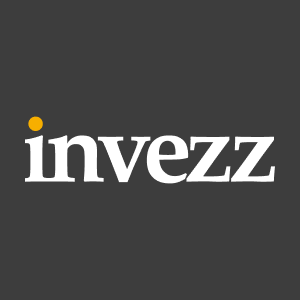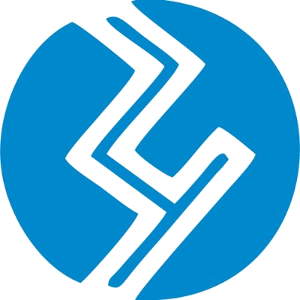Interview: XRP a great hedge and alternative to other top 10 digital assets, says 3iQ CEO Pascal St-Jean
8 min read
XRP, the cryptocurrency associated with Ripple, is witnessing a sharp rally. Since January 2015, XRP’s price has surged from just $0.02 to over $2.19 — a staggering increase of more than 10,800%. The latest rally is being fuelled by a confluence of factors: rising optimism around a potential resolution to the ongoing SEC lawsuit, which saw Ripple’s fine cut from $125 million to $50 million in a proposed joint settlement motion; increased institutional interest; and the beginning of a wave of XRP exchange-traded fund (ETF) launches. On Wednesday, prominent Canada-based alternative asset manager 3iQ launched its XRP ETF — trading under the tickers XRPQ and XRPQ.U — on the Toronto Stock Exchange. Ripple is an early investor in the fund. XRPQ is one of the first ETFs in North America to offer direct exposure to XRP, currently the third-largest digital asset by market capitalization. The move closely follows Purpose Investments’ debut of Canada’s first spot XRP ETF, highlighting growing demand for regulated XRP investment vehicles. “XRP has demonstrated significant growth potential over the past decade, and this groundbreaking strategy offers Canadian and qualified global investors a transparent, low-cost and tax-efficient way to securely access that opportunity. Ripple Labs’ investment support reflects our shared leadership in advancing the digital asset space,” Pascal St-Jean, President and CEO of 3iQ, said. Invezz spoke with St-Jean to learn more about 3iQ’s decision to include XRP in its offerings, key trends shaping the crypto market, the firm’s investment positioning, and his perspective on ETH’s institutional role. Excerpts: How XRP differs from BTC, ETH, and SOL and why it is a great hedge? Invezz: You have just launched the 3iQ XRP ETF, what led you to add this digital asset to your existing suite of ETFs that include Bitcoin, Ethereum, and Solana? Retail demand remains high for XRP in our view. What’s fascinating about XRP and XRPL is that the launch, development, and marketing for the technology is very centralized – a stark contrast to BTC, ETH, SOL, and others through Ripple Labs and its foundation. This approach is so radically different than those seen in other decentralized protocols that we see some investors actually prefer there to be “faces to the name”, and the ability for the technology to market and develop the XRPL directly to institutions and governments. They have an ambitious goal to replace the SWIFT system, which is something compelling that may be made possible by a known, centralized business rather than a decentralized protocol. We see it as a great hedge and alternative to other digital assets in the Top 10 by market capitalization. Bitcoin’s dominant performance to lead to adoption of other digital assets Invezz: What are some of the trends in the crypto market that you are taking note of, and how is 3iQ positioning its investments? One of the most significant trends we’ve noted throughout this cycle is Bitcoin’s dominant performance. This dominance can largely be attributed to two key factors: the increasing institutional adoption of Bitcoin and the rise of public Bitcoin treasury companies. These developments are incredibly positive for the entire digital asset space, as they lend considerable legitimacy and bring substantial capital into the ecosystem. We believe this institutional engagement with Bitcoin will naturally lead to a trickle-down effect into other high-quality digital assets. We are already seeing clear evidence of this, with more and more institutions actively seeking to educate themselves on Ethereum (ETH) and Solana (SOL) now that they have a foundational understanding and comfort level with Bitcoin. Beyond asset-specific trends, we are observing a crucial overarching development: regulatory clarity is rapidly becoming more aligned on a global scale. The proactive stance of the USA in fast-tracking crypto as a priority is having a ripple effect, with other significant economies, such as Japan, actively preparing to open up their markets to digital assets. This increasing regulatory certainty is vital for institutional participation and further legitimizes the industry. 3iQ is exceptionally well-positioned to navigate this evolving landscape, as we have established footprints in multiple jurisdictions, allowing us to adapt and grow as frameworks solidify worldwide. Hedge fund world in crypto seeing increasing migration of talent from TradFi Furthermore, a powerful trend we’ve been closely observing, and indeed acted upon, is the migration of top-tier talent from traditional finance (TradFi) into the crypto space, particularly within the hedge fund world. This inflow of experienced professionals brings invaluable expertise and a sophisticated understanding of market dynamics to digital asset investing. Recognizing this as a key accelerant for the industry, 3iQ was a pioneering firm in building a dedicated managed account platform, which we call QMAP. This platform was specifically designed to cater to the needs of these sophisticated investors and allows for flexible, institutionally-compliant access to digital asset strategies. These trends, encompassing institutional adoption, clearer regulation, and the influx of TradFi talent, are not just happening; they are accelerating. At 3iQ, our investment strategy is built on recognizing and capitalizing on these evolving market dynamics. For instance, we launched North America’s first publicly traded Bitcoin and Ether funds, and more recently, the 3iQ Solana Staking ETF (SOLQ). This focus on providing regulated, secure, and accessible investment vehicles for leading digital assets allows us to cater to the growing institutional appetite while offering opportunities for both capital appreciation and, in the case of staking-enabled products, yield generation. Stablecoins seen as portfolio components but regulation is key Invezz : Stablecoins are piquing institutional interest from JPMorgan to PayPal to Uber also looking to adopt it. Tokenised assets are seeing rise in interest too. How do you view their potential as portfolio components or competitors to your existing offerings? We certainly see them as portfolio components. Stablecoins are an excellent example of public blockchains in action. Centralized corporate issuers are now able to launch their own versions of a digital dollar, while keeping them fungible and interoperable with competitors. These issuers can choose to mobilize their equivalent USD holdings in securities like T-bills and retain or pass through these earnings. However, regulations are key here and we expect the GENIUS act in the US to accelerate this crypto use case, just like MiCA regulations are doing in the EU. 3iQ already incorporates stablecoins in a variety of business activities and within some of our fund operations. Why ETH is internet’s ‘trust machine’ and can be a good institutional asset Invezz : Ethereum’s post-merge narrative has shifted towards staking and programmability. What’s your view on ETH as an institutional asset post the merge? Ethereum is the internet’s trust machine. Including all its major tokens, layer 2 networks, stablecoins, and corporate economy systems. It’s by far the most adopted technology today. The total economic value being settled on Ethereum today rivals G20 countries, yet it remains fully decentralized and adopted by many in countries with opposing views. The network has never been hacked or sustained downtime, yet it has maintained credible neutrality in a world that has been surrounded by anything but. Ethereum’s current architecture allows for any entity to create its own systems, financial or not, which each require financial trust, assurance, and interoperability on the modern internet. Demand for ether (ETH) will come from increasing demand for Ethereum’s role in the modern internet. Programmability on Ethereum allows for corporate entities to develop their own circular, native internet economies and currencies, including stablecoins. Ultimately, we see ETH as an economic imperative for businesses wishing to excel in an environment where artificial intelligence hyper-financializes and dramatically shifts legacy trust systems (inc. government systems., legal systems, corporate systems, etc.). ETH could be a compelling institutional asset as its token distribution from an early inception in July 2015 and current adoption rate are favourable, while proposing solutions to long-term chain security, including quantum computing, and its network consensus health. If there’s anything closest to a digital nation state, then Ethereum is it, and 3iQ are huge believers in the technology. Cayman and Japan next in 3iQ’s expansion plan Invezz : You partnered with Monex group which is now your majority owner, and continue to increase your partnerships globally, such as with Criptonite Asset Management in Switzerland and AltNovel in the UAE. What are other international markets that you are eyeing? Our journey began in Canada, and we are truly grateful for the clients, relationships, and business that we have built out here. However, it is difficult to build a business that relies on a single regulatory body. Budgeting for new initiatives and forecasting future revenue is a near-impossible task. Expanding to other jurisdictions beyond Canada is both opportunistic and adds resilience and diversification. We have begun speaking with major institutions in these jurisdictions with real capital, waiting to allocate. The next frontier for 3iQ following Switzerland and the UAE will be Cayman and eventually Japan, leveraging off our parent company Monex who are one of Japan’s most respected financial services institutions. Asset managers playing an increasing role in staking; see it as a feature of institutional portfolios Invezz: You were early in launching staking within regulated fund structures. Do you see staking yields as a long-term feature of institutional portfolios? Yes. Asset managers play an increasing role in supporting the consensus and governance of blockchains, which is what staking implies. Staking is a duty involving running the blockchain software and voting and attesting to blockchains, and signalling support for network state changes. We are trusted by our clients to custody and hold crypto assets on a diverse range of networks. This, by nature, implies we are important users of the blockchain and therefore have a fiduciary responsibility to represent our clients in consensus matters. In terms of yields, asset managers have the opportunity to outperform competitors, so we believe there is a lot of opportunity to outperform others in a way that is more technology-related than purely financial. This is where deep crypto asset expertise plays a role. It is certainly a feature of institutional portfolios as managers are incentivized to outperform holding the raw asset in question. Regulations bringing clarity to digital assets; pensions also actively exploring the sector Invezz: What’s the biggest barrier today for institutions still hesitant about entering digital assets? Is it volatility, custody, compliance or something else? Until now, it has been a toxic cocktail of uncertainty around regulatory status, tax treatment, and lack of institutional custody solutions known to the institutional investors (i.e. Northern Trust, BONY, State Street). In addition, consultants have been reluctant to embrace the asset class for various reasons. In the last 6 months, there has been a noticeable shift with regulators bringing more clarity to the digital asset space, more robust custody and risk-managed solutions becoming available, with talented, experienced hedge fund managers applying more traditional trading and market-neutral strategies to this rapidly maturing asset class. At the same time, we have recently witnessed Pensions becoming more proactive in their approach to education and exploration of the sector. The post Interview: XRP a great hedge and alternative to other top 10 digital assets, says 3iQ CEO Pascal St-Jean appeared first on Invezz

Source: Invezz



